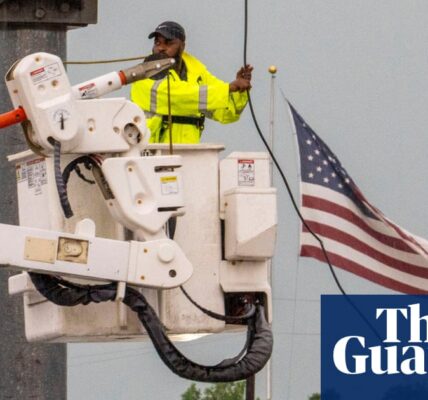The intensification of wildfires in South America calls for new strategies in combating these megafires.
South America is currently experiencing record-breaking high temperatures and is also recovering from destructive wildfires that have ravaged the continent. This comes after the hottest January ever recorded worldwide.
Chile has experienced the greatest impact, as a fire ravaged the coastal region of Valparaíso and claimed the lives of 131 individuals. This event has quickly turned into a national tragedy. In the previous year, there were 23 reported deaths due to summer wildfires in Chile.
Nevertheless, Argentina’s Patagonia is not the sole nation experiencing rampant wildfires. A blaze in Los Alerces National Park has ravaged over 6,000 hectares (14,800 acres) of land, while Colombia’s fires have destroyed more than 17,000 hectares (42,000 acres) in the month of January.
In 2023, the Copernicus Atmosphere Monitoring Service reported a significant increase in wildfires in South America. The amount of carbon emissions from wildfires in Chile and parts of Argentina during the first two months was the second highest recorded in the past 20 years.
The majority of wildfires in South America are caused by human activity. According to Chile’s fire department, Conaf, 99.7% of fires are a result of carelessness or negligence from humans. In the case of the Los Alerces fires in Argentina, local authorities have pointed the blame towards campers.

In recent years, there has been a growing issue with fires. Experts point to a combination of El Niño, a weather pattern that results in higher sea temperatures in the Pacific and impacts global weather, and the climate crisis as the cause for the conditions that allow fires to spread uncontrollably.
According to climate scientist Raúl Cordero from the University of Santiago, Chile and the University of Groningen, both El Niño and heatwaves caused by climate change played a significant role in the recent wildfires. The combination of these factors increased the risk of fires and had a significant impact on their intensity.
According to Francisco de la Barrera, a professor at the University of Concepción, the climate crisis is a major factor contributing to a persistent drought in the area and a higher likelihood of rapidly spreading fires. He believes that we are now facing a new era of large-scale fires unlike anything we have experienced before.
According to the Chilean environment minister, Maisa Rojas, the climate crisis is causing these events to occur more often and with greater intensity. She emphasizes that climate change is not a future issue, but one that we are currently facing. The effects of this phenomenon are already being felt.
Additional factors within the region also contribute. The location affected by the Chilean fire recently has vast, closely inhabited woodlands consisting of non-indigenous trees cultivated for commercial logging. This facilitated the rapid spread of the fire, as noted by De la Barrera.
The government has allocated more money towards fire prevention and response efforts. However, there are some who argue that further action needs to be taken to prevent fires from occurring.
S
Countries in South America have implemented new measures and enacted environmental laws in order to prevent wildfires. Despite these efforts, some people argue that the implementation of these measures has been inconsistent. For instance, Chile, which was already spending £80m annually on firefighting, increased its funding by an additional £40m following the devastating fires last year.
However, recent events have demonstrated that funding alone is not sufficient, as stated by certain experts. Cordero notes that outcomes are not solely determined by resources. Although an early warning system was in place, some residents chose to disregard evacuation orders due to worries about the safety of their homes. According to Cordero, these individuals were more afraid of potential theft than the fires themselves.
The proposed law to limit land-use change in fire-affected areas has not made progress, according to Estefanía González, the deputy director of Greenpeace Chile. She expresses concern about the potential harm in regions where people live alongside flammable plants, which are not accounted for in Chile’s land-use strategies.
Bypass the advertisement for the newsletter.
after newsletter promotion

Display the image in full screen mode.
According to her, there are currently no regulations in place that address the potential risk of fire in building designs or construction.
Rojas highlights some of the government’s work in protection against fires and points out that the number of fires has decreased compared with the previous year.
She explains that the fires have had a significant impact on people and their homes in urban areas. The government is taking swift and coordinated action to combat the fires and provide necessary assistance to the affected individuals.
In Argentina, there have been multiple administrations that have implemented laws focused on the environment, such as a comprehensive environmental law and laws specifically aimed at safeguarding forests and glaciers. However, not all local authorities have implemented these laws consistently.
According to Ana Di Pangracio, the director of biodiversity at the Environment and Natural Resources Foundation in Argentina, although there has been a welcomed increase in funding, certain areas have failed to properly execute fire-management procedures. This has led to confusion over which governing body is responsible for distributing funds in certain cases.
She emphasizes that the issue is not solely about finances. Instead, there needs to be a change in perspective regarding fires. The focus should shift from a reactive, “battle mode” approach to a proactive and preventative management strategy. Failure to do so will result in constantly playing catch-up with fires.
According to her, the government should caution individuals to behave more responsibly by refraining from lighting fires during a drought. Additionally, they should also endorse other proactive measures.
The environmental safeguards in Argentina have been under attack by the country’s new leader, Javier Milei.
According to Di Pangracio, the severity and impact of fires in South America has greatly increased. This is exacerbated by climate change, which intensifies natural occurrences such as flooding and droughts.
“It is particularly concerning when the leader of a country denies the existence of climate change.”
Source: theguardian.com

